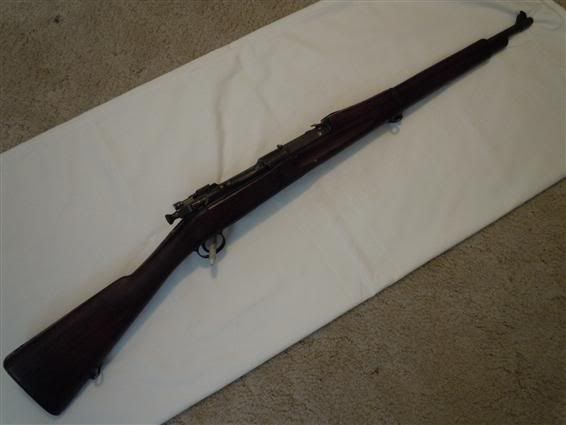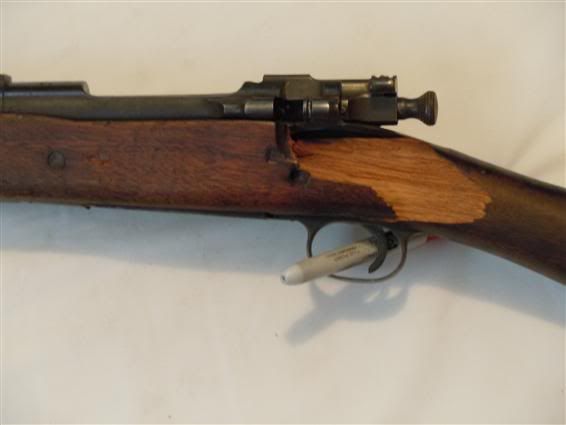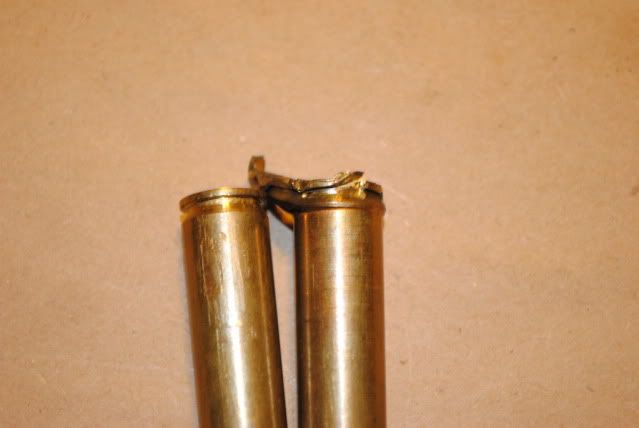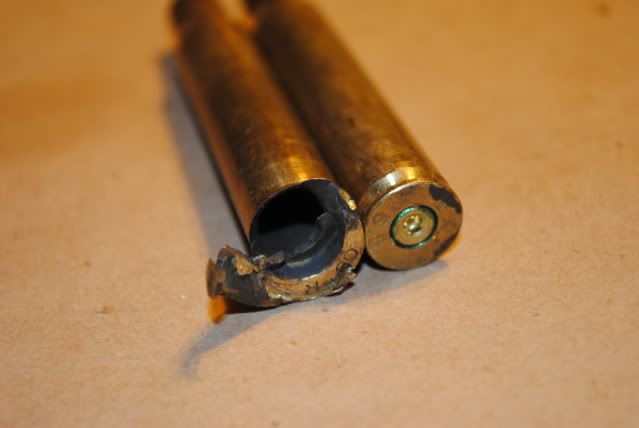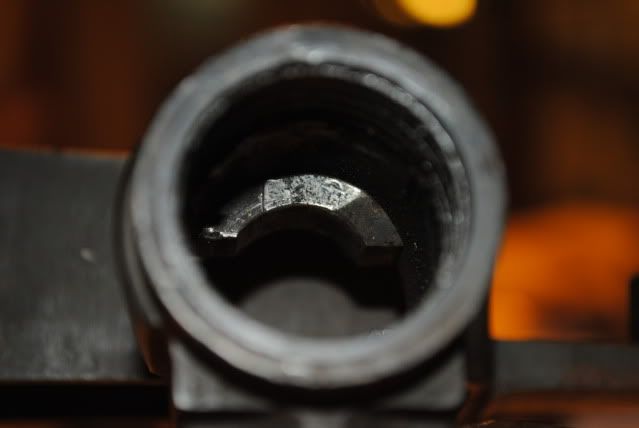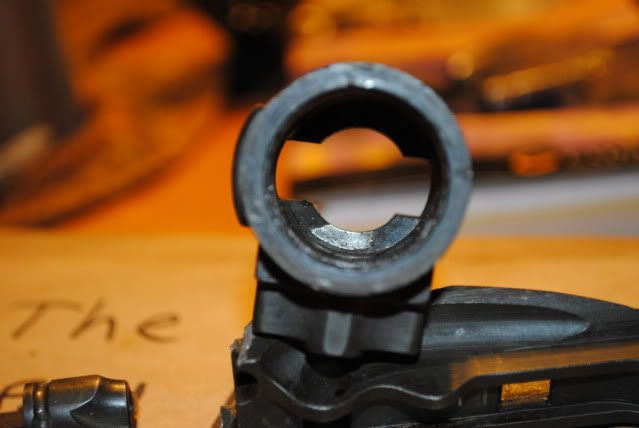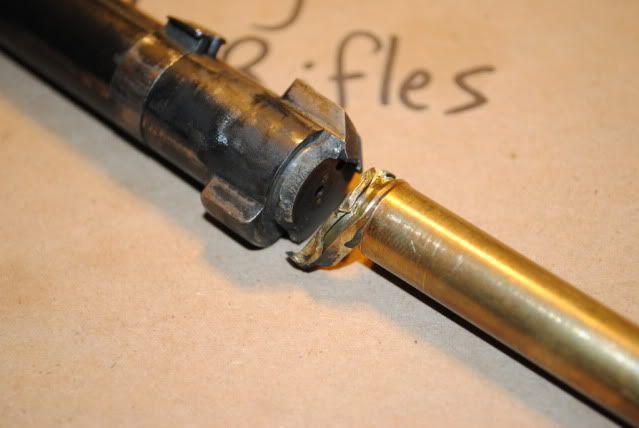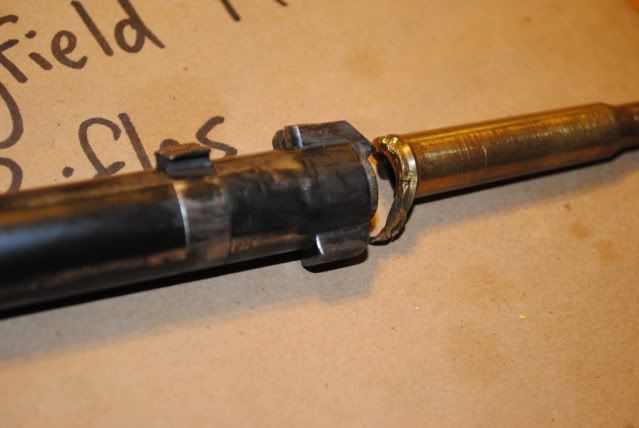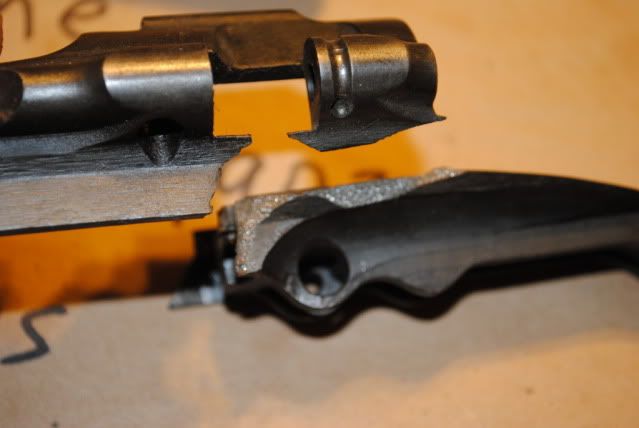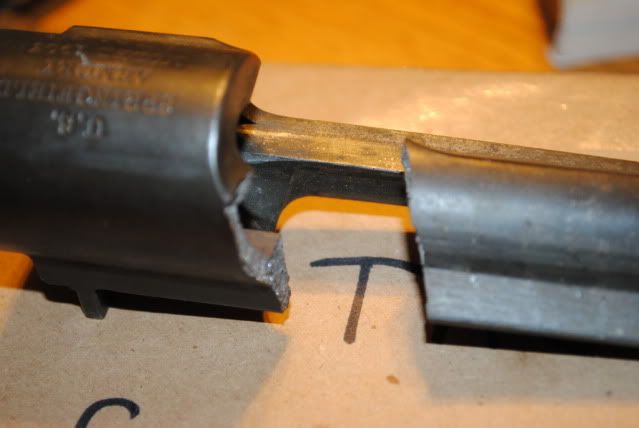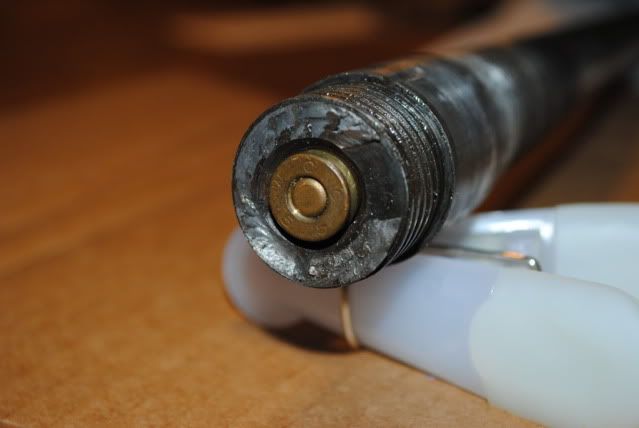I have cleaned it completly looking for any signs of defects or stress anywhere. Except for the worn rifling I cannot find any visible evidence. I know, based on the info in this thread that the 'danger' is not a visible thing and am considering that in my decision to use or not use. The final comment made above about the bolt-replacement (swept-back bolt handle) tells me I have the 'safer' bolt, as mine has a definite sweep towards the rear on it.
Yours is a M1903 as all A3’s were made during WWII.
It is entirely possible that you have one of the good ones. There were more “good” ones than “bad” ones made out of the 1,000,000 of the things made.
And good is a relative term. These are old receivers built out of inferior materials with little to no safety features. They don’t handle gas well and were known to frag in overpressure conditions. They have no margin of safety in an accident.
And I mean no margin of safety, based on examination of Hatcher’s Notebook, P.O Ackley’s Vol II handbook and the Oct 1945 Dope Bag in American Rifleman.
I highly recommend reading both P.O. Ackley’s discussion and the Oct 1945 Dope. The sense I get out of both is that quality of SHT receivers varies. In P.O Ackley’s blowup tests, the SHT receiver ring completely blew off (not unexpected) but it held up better than expected. “ It might be observed that the old hard Springfield actions approached the strength of the new actions more closely than had been supposed. The main difference being that when they do let go, the are more apt to blow apart completely…” It took 3 grains more of powder to destroy a Nickel Steel 03 receiver. And that one blew the cocking piece out with such force P.O. said it would have killed someone.
What is clear from the old references, was that enough SHT receivers had failed in civilian hands, even those reheated by Sedgeley, that by Oct 1945 SHT receivers were receiving bad press.
Now there are fan boys of the single heat treat receivers, you will find Mr. Michael Petrov on Jouster.com , he is one of these. Mr Petrov took two single heat treat receivers, fired 8mm Mauser cartridges in them, apparently the receivers survived. Mr. Petrov removed the pictures (darn him) so there is nothing to examine. All he really proved were that he had two good receivers, but in proving them good, I sure as heck would not use them again.
So, do you drive without a safety belt. Do you run a bench grinder without safety glasses? What is your tolerance for risk? If something goes wrong, and I mean seriously wrong, would it bother you to be permanently injured?
Using these things is more an aspect of your risk tolerance. The biscuit could be good, or it could be poisonous. Won’t find out till you bite.
There was a discussion on jouster about this blown 03 sold on gunbroker. The description from the auction is below, the jouster reference below that.
When these things blow, they blow bad.
http://www.gunbroker.com/Auction/ViewItem.aspx?Item=190985391
This item is a Springfield Armory model 1903 rifle that is a good wall hanger. Its been hanging on the wall of the shop for about 22 years. It is that bad a shape it has been blown up. This is a low ser # of 236162, I had this hanging on the wall to show people what would happen if they shot one of the old low ser # rifles with modern ammo. Look at the pictures to see that this is NOT a shoot able rifle. The guy that shot this rifle spend 4 days in the hospital getting metal out of his eye & metal out of his arms. No FFL required. I will send out a email at the close of the bidding, please copy & send back with payment. I’m selling out a gun shop that was in business for over 30 years. More parts & pieces to come. The shop did a lot of general repair & that’s why all the different parts. This and a bunch more that will be coming up for sale were in 4 other old gun shop’s that I’ve bought out over the last 31 year’s.http://www.jouster.com/forums/showthread.php?14045-Blown-03-Receiver-From-GB
